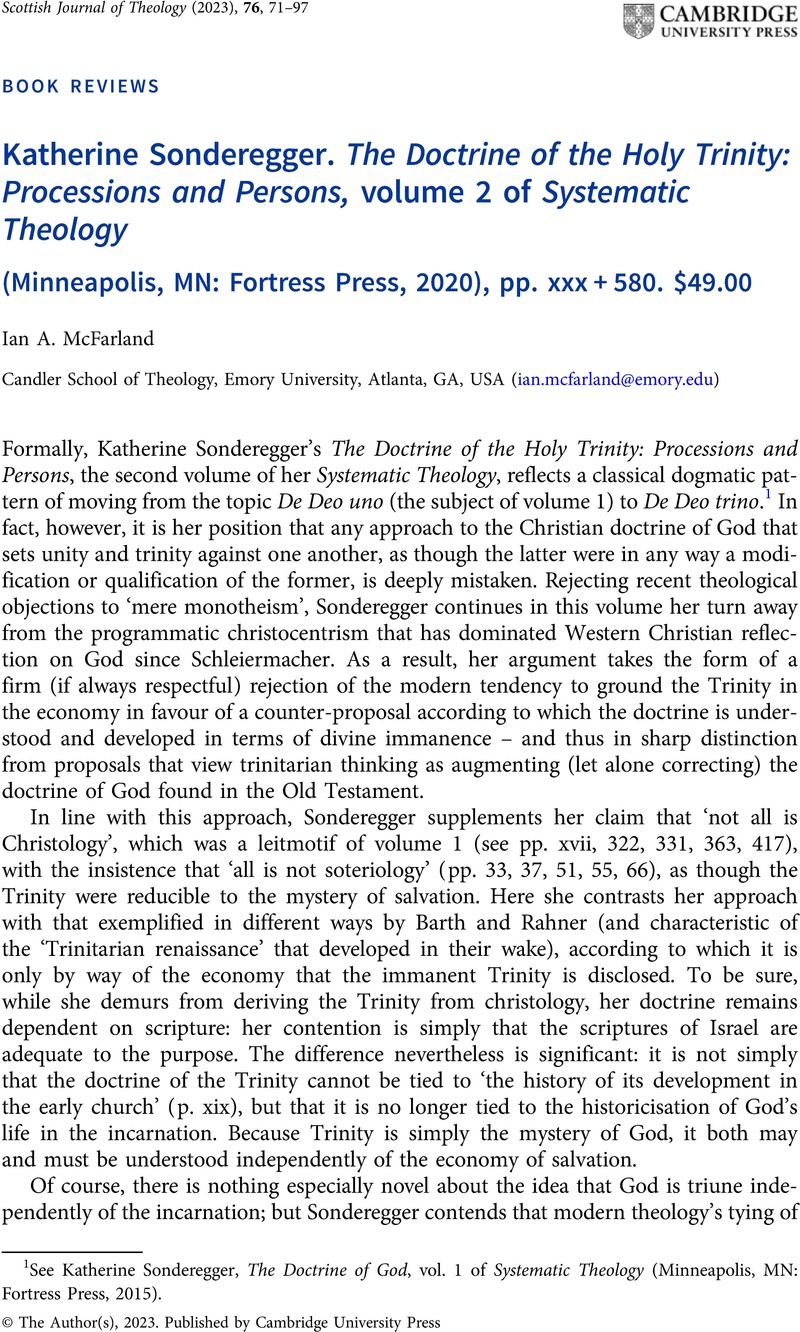No CrossRef data available.
Article contents
Katherine Sonderegger. The Doctrine of the Holy Trinity: Processions and Persons, volume 2 of Systematic Theology (Minneapolis, MN: Fortress Press, 2020), pp. xxx + 580. $49.00
Review products
Katherine Sonderegger. The Doctrine of the Holy Trinity: Processions and Persons, volume 2 of Systematic Theology (Minneapolis, MN: Fortress Press, 2020), pp. xxx + 580. $49.00
Published online by Cambridge University Press: 09 January 2023
Abstract
An abstract is not available for this content so a preview has been provided. Please use the Get access link above for information on how to access this content.

Information
- Type
- Book Review
- Information
- Copyright
- Copyright © The Author(s), 2023. Published by Cambridge University Press
References
1 See Sonderegger, Katherine, The Doctrine of God, vol. 1 of Systematic Theology (Minneapolis, MN: Fortress Press, 2015)Google Scholar.


